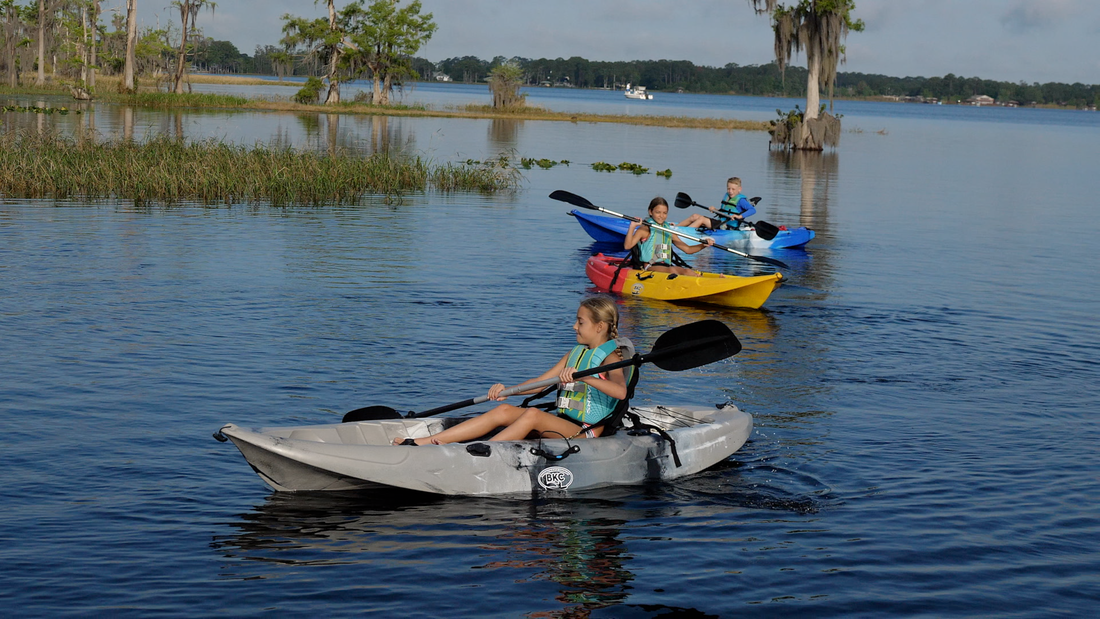As we move into a warmer season of the year, the urge to get out of the house in any form is undeniable. What better way to enjoy the outdoors than on the water in a kayak? We encourage you to take the whole family out on the water with you, even children! Kayaking is a great activity for younger people as long as you’ve taken appropriate safety precautions.
Kayak safety is always important, but especially when you’re considering taking children out on the water with you. As long as you’ve practiced enough and planned your trip out well, the rest should go smoothly.
Know Before You Go: Kayak Safety for Children
Many of the ways you prepare a child to safely kayak are similar to those that you’d consider for yourself when just starting out. PFD’s, light, breathable clothing, adequate food and water supplies, SPF, and a fleshed-out travel plan are all still applicable kayak safety measures you’ll implement with children. Here are some steps to consider more intentionally to have a fun and safe paddling session with kids:
Be aware of their skill level
How intensely you need to prepare for a kayaking session largely depends on your child’s skill level and age. If they can’t swim yet, make sure they have a properly fitting PFD on at all times. If they are too small to manage paddling on their own, having them in the main compartment as a novice in your kayak is a great way to ease them into getting comfortable out on the water. Children 8 and younger are probably going to be beginners, and between ages 8-10 they can start getting comfortable helping paddle in a tandem kayak, and eventually move into their own small boat.
Practice the basics
If possible, investing in kayaking lessons or some more training-focused water sessions before taking a paddling trip is really helpful. Explaining and giving examples of what to do is only helpful to a certain extent—the best way to prepare a child to be out on the water is to give them practice time paddling, doing wet exits (when in a sit-in kayak, a wet exit involves getting out of the kayak after it tips), and balancing in the boat. Make sure the kayak and paddle aren’t too wide or long, respectively, as this will make it more challenging for your child to handle. Giving them different paddles to try and allowing them to discern which feels best is a helpful exercise.
Avoid over-exertion + burn out
Sticking to calm waters with minimal strong currents are the best conditions to have your kids practice kayaking. Whether it’s a formal lesson, or just a practice trip, you want to give children time to get comfortable and develop their skills properly before going out on a river or an area with strong rapids. You could also consider shorter excursions depending on how young your child is. High protein snacks and lots of water are also great to have on hand in the case of anyone overexerting themselves and need a break.
Plan for emergencies
In addition to over-exerting themselves, if you and a child are in separate boats, make sure you have towing gear ready just in case. Since they’ll still be developing their endurance, fatigue can sneak up on them unexpectedly. Explaining to them what to look out for and being prepared to support will are necessary steps in the learning process. If possible, keeping outings under an hour while they’re still getting the hang of it will prevent burn out
Kayak safety is something to be taken seriously, but if you do the research and come well prepared to your kayaking session, it’s not hard to implement and enforce. Don’t let the preparation for safety be a barrier to bonding with your whole family out on the water!

